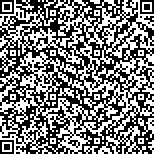| Quote
: |
朱勇,李亮,吴华英,夏帅帅,李丰,黄惠勇,杨萍.基于网络药理学探讨柴胡龙骨牡蛎汤治疗癫痫的作用机制[J].湖南中医药大学学报英文版,2019,39(10):1212-1217.[Click to copy
] |
|
| |
|
|
| This paper
:Browser 3760times Download 1798times |
| 基于网络药理学探讨柴胡龙骨牡蛎汤治疗癫痫的作用机制 |
| 朱勇,李亮,吴华英,夏帅帅,李丰,黄惠勇,杨萍 |
| (湖南省脑科医院神经外科, 湖南中医药大学临床医学院, 湖南 长沙 410007;湖南中医药大学中医诊断学湖南省重点实验室, 湖南 长沙 410208) |
| 摘要: |
| 目的 基于网络药理学、生物信息学等方法研究神经递质参与柴胡龙骨牡蛎汤(CLMD)抗癫痫潜在机制。方法 利用中药系统药理学数据库和分析平台(TCMSP)预测、筛选CLMD可能的生物活性成分,并预测其靶点。利用药物靶点数据库挖掘癫痫相关靶点,构建CLMD药效分子-靶点网络及CLMD药效分子-癫痫靶点网络,采用ClueGo分析CLMD治疗癫痫可能的分子机制,使用锂-匹罗卡品癫痫大鼠模型进行相关机制验证。结果 从TCMSP中获得CLMD中活性成分42个及110个药效分子靶点基因。利用数据库获得213个癫痫靶点。CLMD生物活性成分-癫痫靶点网络构建分析,最终得到CLMD治疗癫痫的169个关键基因,包括共同靶点11个,分别为:CHRNA2、CYP1A2、CYP3A4等。通路富集分析显示,这些重要靶点能够富集到在癫痫发生发展中发挥重要作用的通路上,如GABA-A受体、多巴胺能、谷氨酸能、神经递质受体等信号通路。动物实验验证,CLMD能提高锂-匹罗卡品癫痫大鼠GABA水平,降低DA水平,保护海马CA1区神经元细胞。结论 CLMD治疗癫痫具有多系统、多成分、多靶点的特点,特别是调整神经递质代谢水平。 |
| 关键词: 癫痫 柴胡龙骨牡蛎汤 网络药理学 分子机制 信号通路 |
| DOI:10.3969/j.issn.1674-070X.2019.10.009 |
| Received:July 02, 2019 |
| 基金项目:国家自然科学基金资助项目(81603512、81874429);湖南省卫生计生委科研课题(20180364、20190058);湖南省自然基金(2019JJ80027);湖南省中医药科研计划项目(201818)。 |
|
| Study on the Mechanism of Chaihu Longgu Muli Decoction in the Treatment of Epilepsy Based on Network Pharmacology |
| ZHU Yong,LI Liang,WU Huaying,XIA Shuaishuai,LI Feng,HUANG Huiyong,YANG Ping |
| (Neurosurgery Department of Brain Hospital of Hunan Province, Clinical Medical College of Hunan University of Chinese Medicine, Changsha, Hunan 410007, China;Key Laboratory of Hunan Province for TCM Diagnostics, Hunan University of Chinese Medicine, Changsha, Hunan 410208, China) |
| Abstract: |
| Objective To study potential mechanism of Chaihu Longgu Muli Decoction (CLMD) in the treatment of epilepsy based on network pharmacology, bioinformatics and other methods. Methods Potential bioactive components of CLMD were screened and predicted through Traditional Chinese Medicine Systems Pharmacology Database and Analysis Platform (TCMSP) and their targets were predicted. By using Therapeutic Target Database (TTD), epilepsy-related targets were mined. CLMD pharmacodynamic molecule-target network and CLMD pharmacodynamic molecule-epileptic target network were constructed. Possible molecular mechanism of CLMD in the treatment of epilepsy was analyzed through ClueGo. Lithium-pilocarpine epilepsy rat model was used to verify the mechanism. Results A total of 42 bioactive components of CLMD and 110 pharmacodynamic molecular target genes were obtained from TCMSP. A total of 213 epileptic targets were screened out through the database. Through CLMD bioactive component-epileptic target network construction analysis, finally, 169 key genes for CLMD treatment of epilepsy were obtained, including 11 common targets:CHRNA2, CYP1A2, CYP3A4, etc. Pathway enrichment analysis showed that these important targets could be enriched in pathways that played an important role in the development of epilepsy, such as GABA-A receptor, dopaminergic, glutamatergic, neurotransmitter receptor and other signaling pathways. Animal experiments showed that CLMD could increase the level of GABA, decrease the level of DA, and protect neurons in hippocampal CA1 area in rats with epilepsy induced by lithium-pilocarpine. Conclusion CLMD has characteristics of multi-system, multi-component, and multi-target in the treatment of epilepsy, and it can especially regulate neurotransmitter metabolic level. |
| Key words: epilepsy Chaihu Longgu Muli Decoction network pharmacology molecular mechanism signaling pathway |
|

二维码(扫一下试试看!) |
|
|
|
|


